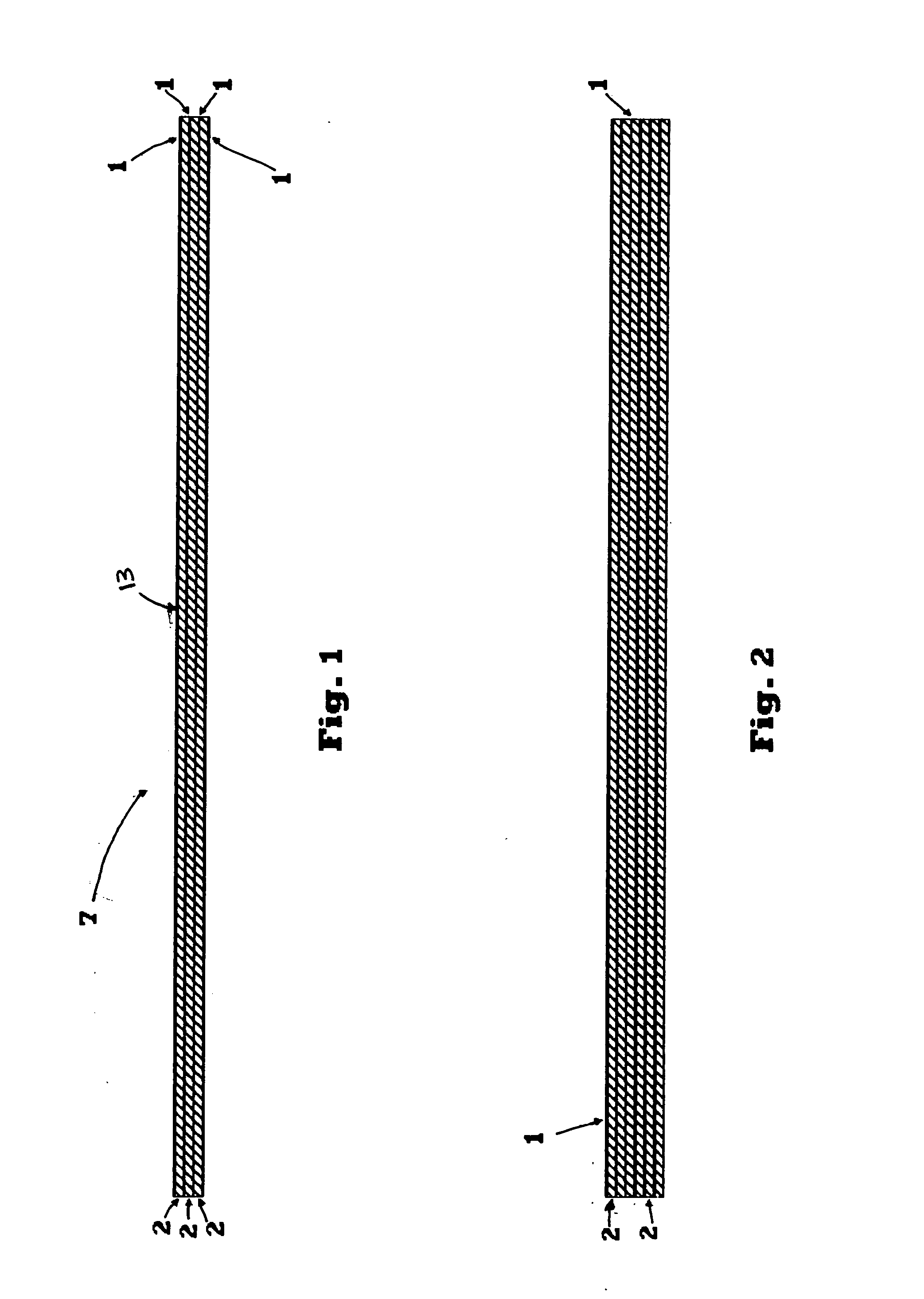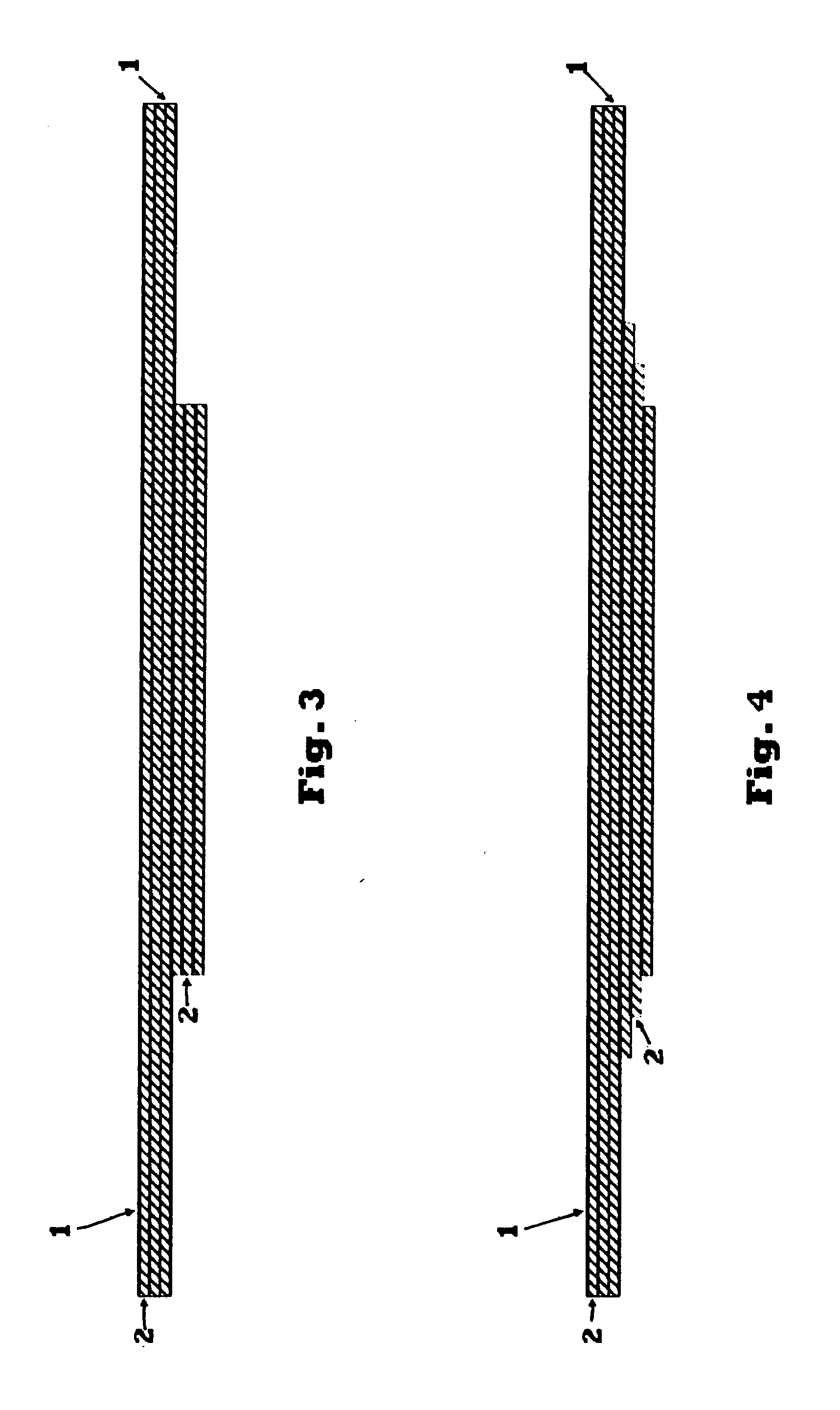Energy Absorption Material
a technology of energy absorption and energy absorption materials, which is applied in the direction of vehicle safety arrangements, synthetic resin layered products, packaging, etc., can solve the problems of affecting the aerodynamics of vehicles, requiring substantial development time and engineering effort, and known energy absorption materials that do not provide effective and economic pedestrian impact energy absorption, etc., to achieve excellent impact energy management capability, effectively cushion impact and convert impact energy
- Summary
- Abstract
- Description
- Claims
- Application Information
AI Technical Summary
Benefits of technology
Problems solved by technology
Method used
Image
Examples
Embodiment Construction
[0038]In the Figures, like numerals indicate like elements.
[0039]An energy absorption material 7 and associated configurations, processes and application approaches are disclosed for, though not limited to pedestrian impact energy absorption for vehicle hoods and fenders, as well as other applications which are disclosed herein.
[0040]The energy absorption material 7, shown in FIG. 1, is a plurality of thin structural layers of a substantially rigid material 1 with cushioning layers of a compressible material 2 alternating between the thin structural layers of material 1. According to one embodiment, constituent materials include a thermoplastic nylon foam with a thermoset epoxy resin prepregged onto woven fiberglass. For example, the thermoplastic nylon foam for the layers of compressible material 2 is a type of foam Zotek-N B50 available from Zotefoams, of Croydon, Surrey, UK and Walton, Ky., USA, and one example of the thermoset epoxy resin prepreg with fiberglass reinforcement fo...
PUM
| Property | Measurement | Unit |
|---|---|---|
| thickness | aaaaa | aaaaa |
| thickness | aaaaa | aaaaa |
| thickness | aaaaa | aaaaa |
Abstract
Description
Claims
Application Information
 Login to View More
Login to View More - R&D
- Intellectual Property
- Life Sciences
- Materials
- Tech Scout
- Unparalleled Data Quality
- Higher Quality Content
- 60% Fewer Hallucinations
Browse by: Latest US Patents, China's latest patents, Technical Efficacy Thesaurus, Application Domain, Technology Topic, Popular Technical Reports.
© 2025 PatSnap. All rights reserved.Legal|Privacy policy|Modern Slavery Act Transparency Statement|Sitemap|About US| Contact US: help@patsnap.com



